We often get questions about exactly how many watts this or that saves and many times we cannot give the official number from the Kogel lab.
While this may sound like these Kogel guys from West Texas don’t know what they’re talking about, the full answer is a bit more nuanced than that.
Continue reading to find out why.
Designing components of our bicycle bearings
There are five components in a ball bearing for bicycles and if you look closely at the image below, you can see all of them save for the bearing seals and grease:
- Bearing rings/races
- Balls (Kogel only uses ceramic)
- Retainer to separate the balls
- Bearing seals
- Bearing grease.
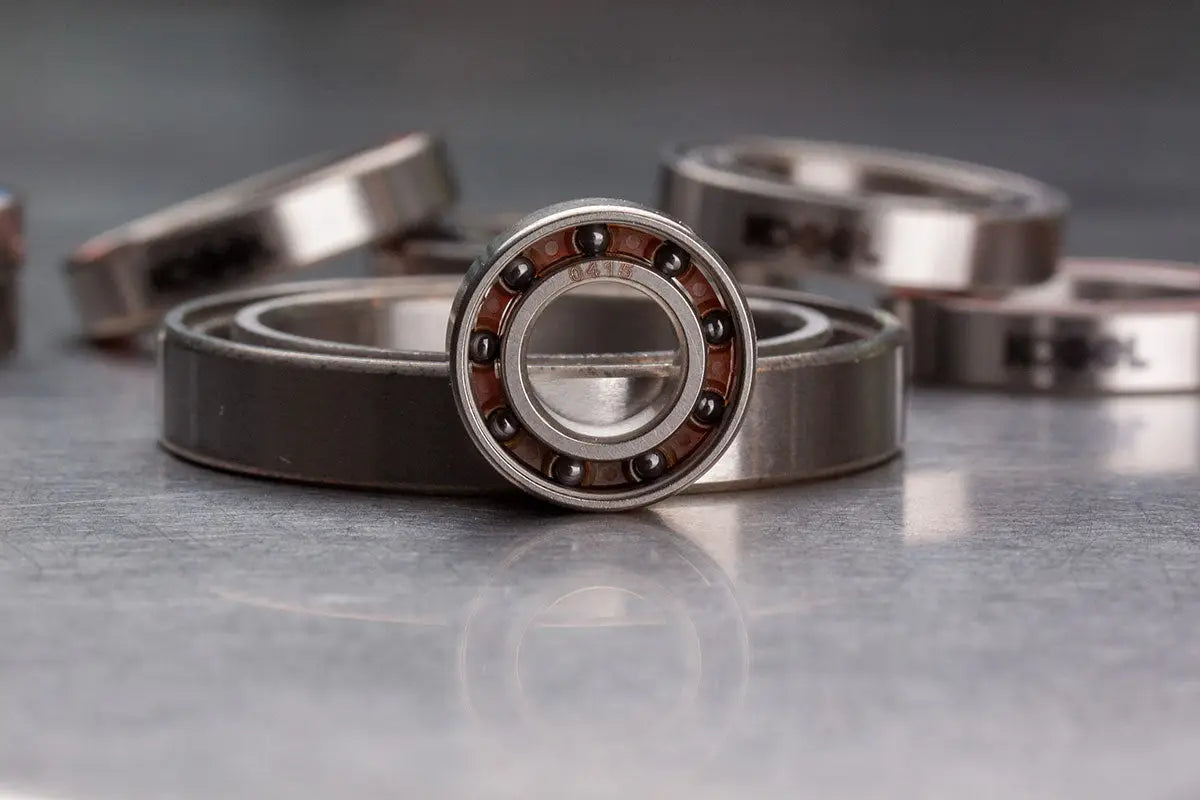
Kogel bearings races, rings, retainer and ceramic balls
When we started our company we spent an incredible amount of time looking at the hard parts:
- How to polish the steel races to create the smoothest possible surface,
- How to work with our manufacturer to make the balls so perfectly round and smooth you need a microscope to spot any imperfections.
- How to set tolerances for the best internal clearance between the balls and races that works for bottom brackets, pulley wheels and hub bearings.
Where friction gets created in a ball bearing
Once all that work was done, we ended up with a bearing design that has little to no internal friction. Imagine a glass ball rolling across a mirror. There is not much to slow it down.
Since all those features have been designed close to perfection, we do not have to do a lot of development work for these components.
Also, the internal bearing cages have a negligible effect on friction, so the only variables are in the seals and grease used.
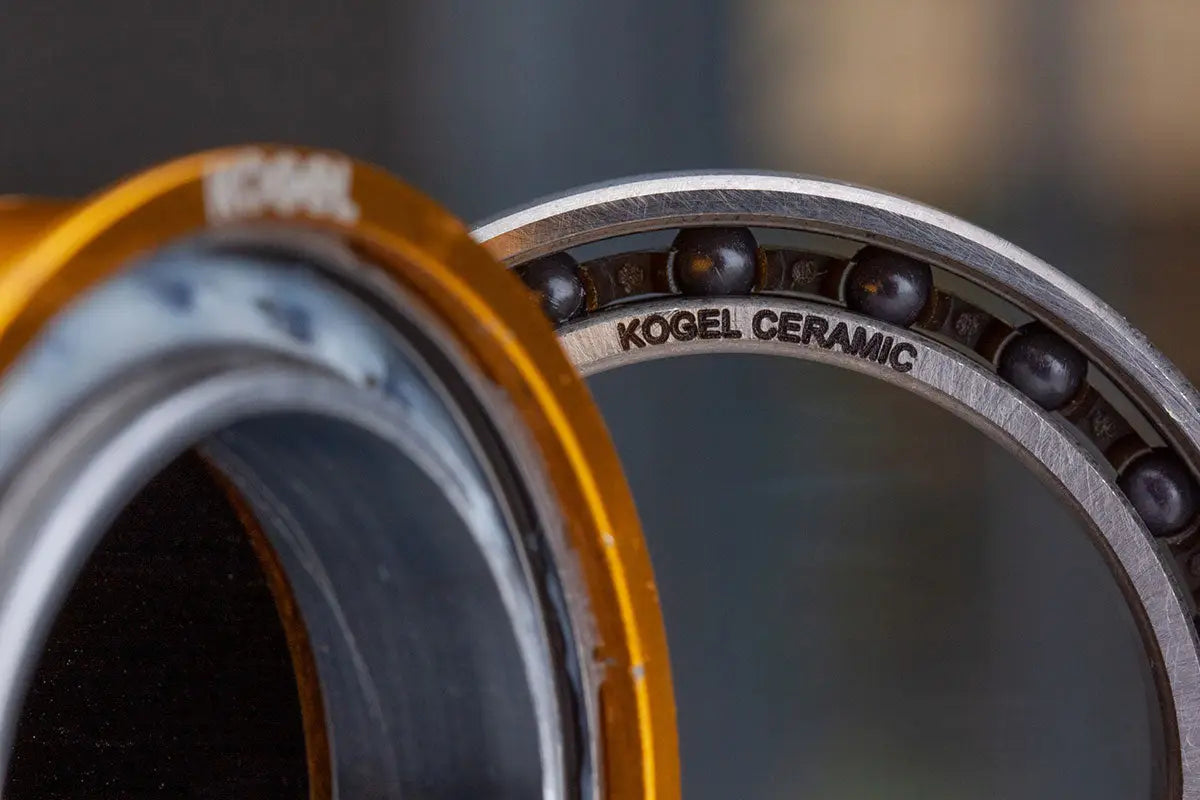
Kogel bearing ready for grease and proper seals
How bearing grease and seals cause friction
Lubrication is the obvious source of drag in a bearing. Whether you use a thin oil to lubricate an RC car or a thick grease meant to lubricate joints on a forklift on an offshore oil rig makes a big difference in how free the bearings will spin. It typically also makes a big difference in durability or how often you need to clean and reapply the grease.
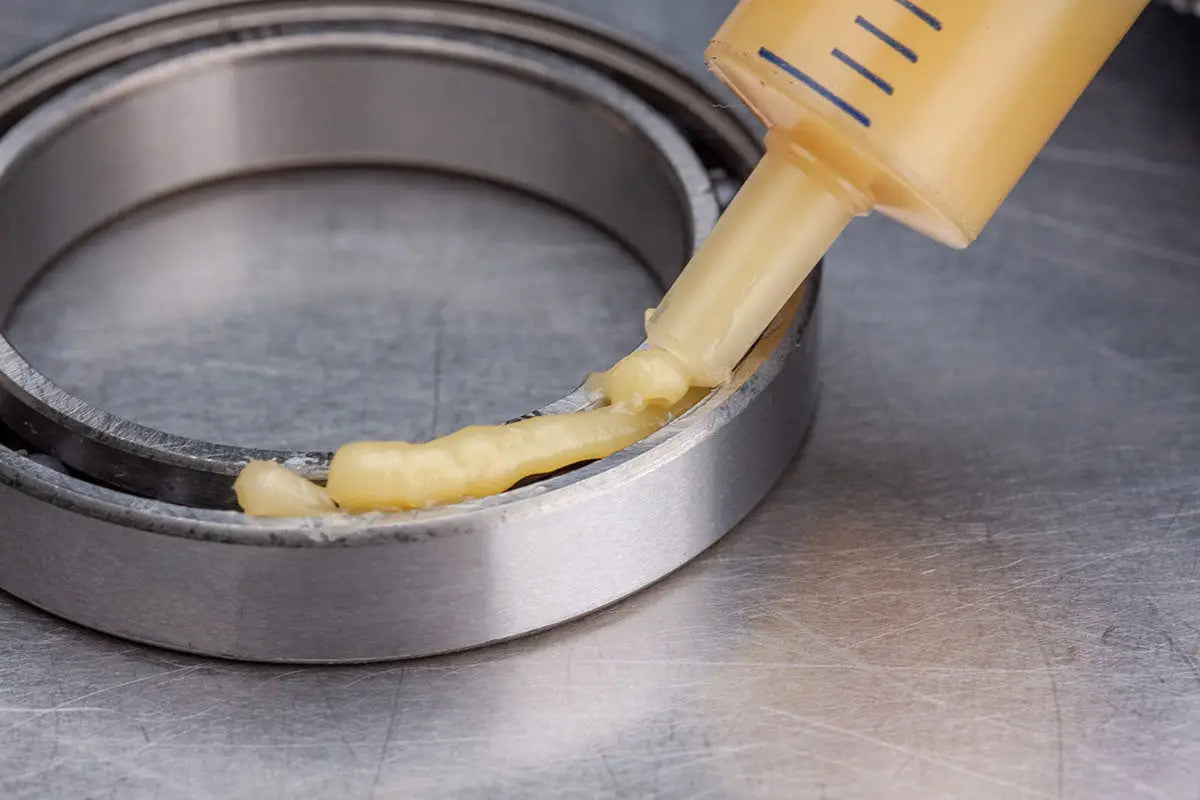
Applying proper bearing grease
Similar for seals; they can range anywhere from a shield that leaves the internals fully open to the elements to a rubber seal that is cut slightly larger than the space between the two races.
This will cause the seal to press heavily on both rings and cause a lot of drag. The upside to this kind of seal is that whatever is inside stays inside and all contamination stays outside.
Low friction vs durability
The balance between the lowest friction and best protection is where we find the culprit of bearing friction.
Every cyclist wants the lowest possible friction, but no cyclist wants to bring their bike to the shop for service after every two training rides.
The relentless search for lowest friction is often confused with ‘the best bearings’. The best bearings are the ones that match your riding style, environment and service intervals.
By doing all the things right (balls, races and retainers are optimized and grease is a very low friction grease that does not wash out after 2 rides) we can focus on the seals to meet your habits.
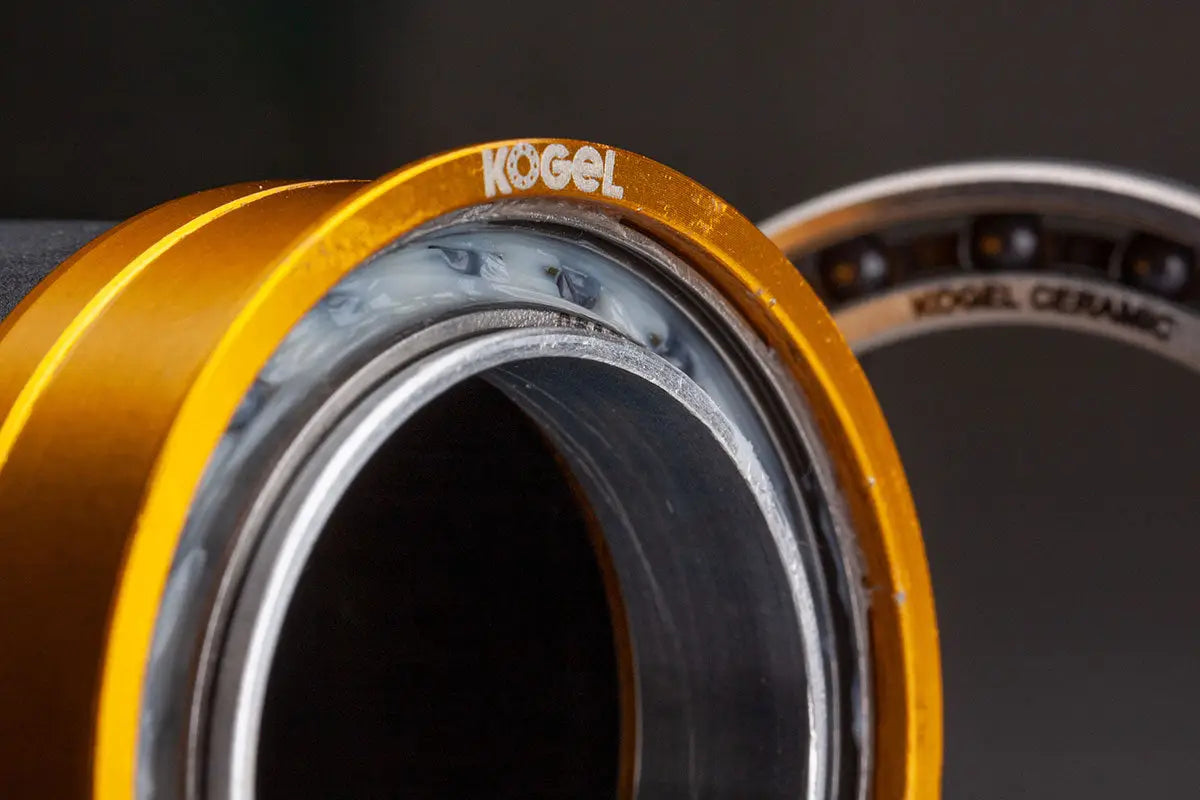
Kogel bearing assembled, greased and ready for proper seals
Picking the right seal for your riding style
Kogel offers two seal types: road seals for lowest friction and cross seals for best protection.
About our road seals
Our road seals are designed to brush the races ever so slightly when they rotate. They cause a minimal amount of friction, but if we cut them any shorter they would lose all protection. This allows road racers to reach maximum efficiency, while giving some respite to their mechanics. Mechanics appreciate not being up until 2am every night servicing wheel bearings during grand tours.
As I’m writing this, Mads Pedersen just put everyone at two bike lengths in stage 13 of the Vuelta. I guess his Kogel wheel bearings were OK after 13 days of back to back racing.
About our cross seals
Our cross seals are for best protection. Double sealed bearings with a solid amount of pressure between seals and races are guaranteed to keep the dirt out and the grease in. Cross seals add around 0.5W of friction to a bottom bracket.
For this exercise, let’s have a look at Jolanda Neff’s races in the pouring rain in the Snowshoe and Mont Sainte Anne world cups.
Adding 0.5W of friction is not something any racer wants to hear about, but bear with me. Our cross seal bearings will work exactly the same at the start and after 90 minutes of watery mud treatment.
A lesser sealed bearing would be faster on the opening lap, but would fill up with dirt. I have no data on how a bearing filled with wet sand runs, but I’m pretty sure it adds more than 0.5W.
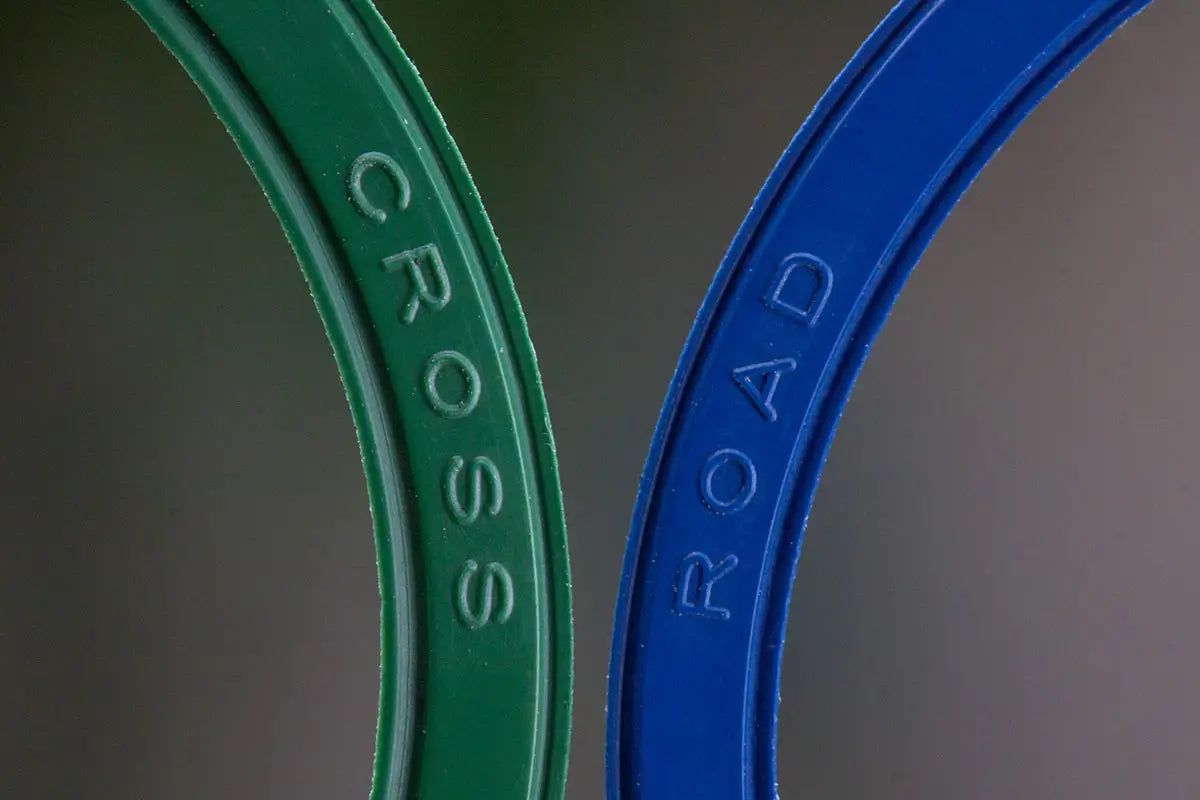
Close up of Kogel cross and road seals
Claiming the lowest friction bearings
Keep all the above in mind when you see a company advertising their lowest friction bearings. Personally I ride bikes outside on roads and trails where contamination is prevalent. Going for a ride in a sterile lab, surrounded by men in white coats: not exactly the reason why I love this sport so much.
Your bearings need to be adjusted to your environment and a relentless race towards lowest friction is just dumb. For this reason you will find grease in our pulley bearings.
They will not spin as freely on the showroom floor compared to the other guys who send out dry bearings. The upside is that your Kolossos pulley wheels only need annual service or a bit more often if you ride in super wet conditions.
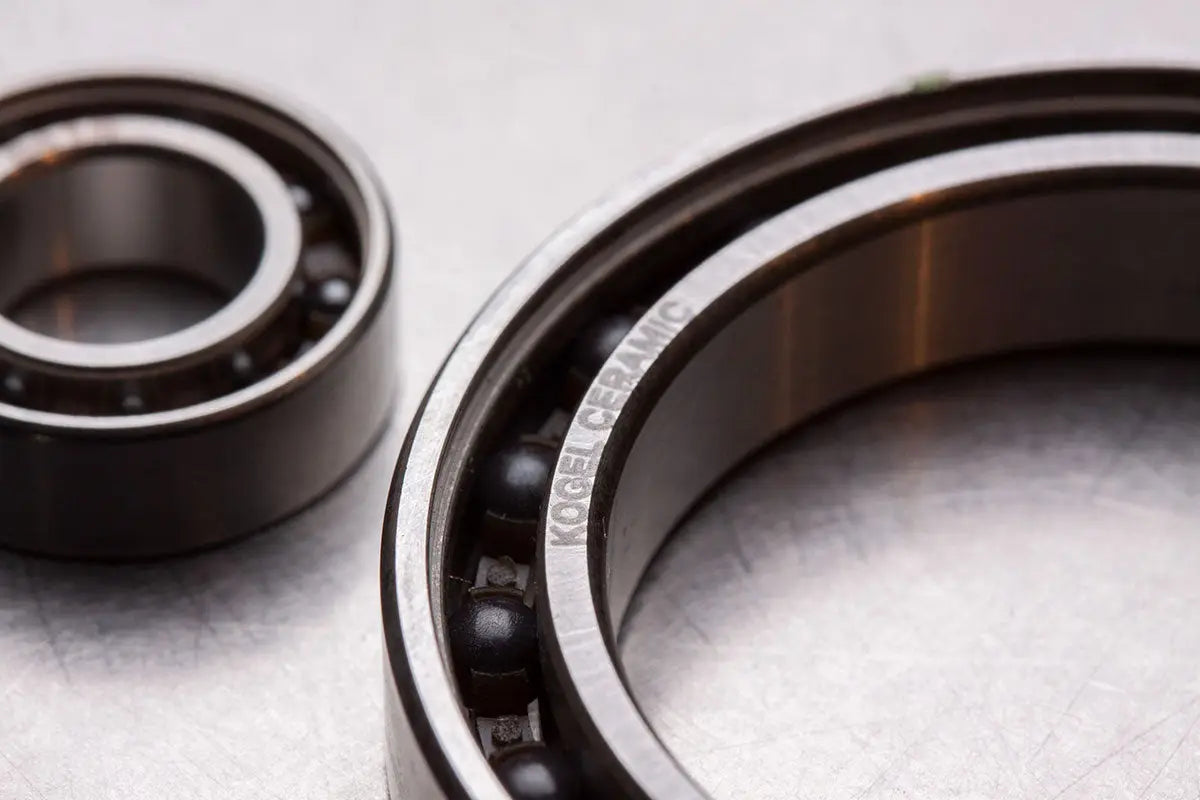
Kogel bearing ready to help you go faster with less effort
By making a super high-quality bearing product with a meticulously curated grease that will stand the test of normal riding, we can get our bearings up to 98% of the performance of a race day prepped bearing.
To squeeze out the last 2% requires Kogel to make concessions on durability, which we are not willing to do. Unless you travel with your year round personal mechanic of course, in that case give us a call! We have some really cool ideas to squeeze out the last bits of friction for your big event.
Ride on,
Ard

